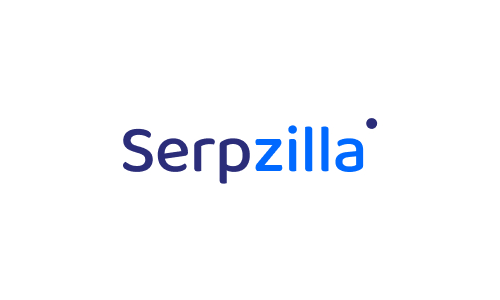Google announced a new multi-vector retrieval algorithm called MUVERA. This core update is expected to take about three weeks to roll out. This is a global update impacting all regions, in all languages.
Around the same time, SERP volatility spiked across all industries.
Below is a representative example of the volatility graph from Semrush Sensor for the US:
It’s Googlequake!
On June 25, Google introduced Muvera, a new retrieval algorithm which could reshape online search as we know it.
Just days after Muvera’s announcement, the June 2025 Core Update began rolling out. While the connection between the two isn’t officially confirmed, many in the industry believe Muvera is already changing the new algorithmic core.
How will Muvera impact link building? This is what we explore in this article:
- What exactly changed with Muvera
- How these changes impact off-page SEO and backlink strategy
- What practical steps you can take to stay ahead
- Why Serpzilla is already equipped to help you capitalize on the changes
What is Muvera?
Muvera is Google’s latest advancement in neural information retrieval technology, which basically defines how user search queries connect with content available on the Internet.
Muvera replaces the traditional approach of representing an entire document with a single embedding (vector). Instead, it introduces a multi-vector model, where each word in a query or document is embedded and interpreted individually.
The goal here is to improve semantic depth of search, but keep the operational scalability of single-vector searches.
A Google blog article about Muvera talks in detail about the science behind the update. As SEO experts, we would like to focus on what it means in practical terms:
- Google can now retrieve content that better matches the user’s intent, even if the phrasing doesn’t include exact keywords.
- Pages with rich, topic-aligned, and well-structured content will rank higher, not because of superficial matches, but because of semantic compatibility.
- Search is becoming more language-native and context-aware, moving closer to how humans understand and connect information.
Muvera’s architecture actually extends beyond traditional internet search. It already influences YouTube recommendations, Google News, and there’s a huge chance it will affect future LLM-based features, so we can probably assume that zero-click searches and SEO optimization for AI will be impacted as well.
How Muvera Affects Link Building
Although Muvera represents a profound change in how search will work, it doesn’t make link building obsolete. It only solidifies tendencies that have been known to SEO specialists for quite some time now: E-E-A-T content compatibility, relevance of link placement, content freshness will play an even bigger role in link evaluation.
In the pre-Muvera SEO, generic link building often relied on predictable mechanics:
- Find a page with decent metrics,
- Insert an exact-match anchor,
- Hope Google picks up the keyword signal.
In truth, this tactic hasn’t been yielding good results for ages now.
The more advanced strategies included anchor diversification, direct topical connection of the referring domain and the linked page, combining various types of links.
So what exactly changes with Muvera?
Google now analyzes meaning at a token level, it doesn’t just “see” the anchor — it interprets the surrounding content, the topic of the page, the semantic theme of the domain, and how well the link fits within the informational context.
This means:
- Links placed in low-context, off-topic content may have minimal impact on SEO performance under Muvera’s updated retrieval system.
- Contextually embedded links in thematically relevant, deeply structured content will carry greater semantic weight.
- Google is increasingly able to detect whether an anchor is synthetic, spammy, or overly optimized, even if it’s not violating explicit link scheme guidelines.
🆚 Before vs. After Muvera: Link Building Strategy Shift
| Tactic | Before Muvera | After Muvera |
| Anchor Text Focus | Exact-match anchors preferred to “signal” relevance (e.g. buy vegan protein) | Natural language anchors with semantic fit (e.g. this guide, trusted review) can be safer and more effective |
| Contextual Embedding | Link surrounded by 1–2 sentences of semi-relevant filler | Link embedded in logically connected content, ideally within a full paragraph or section relevant to the target page |
| Referring Domain Selection | Domain-level metrics like DR/TF were the key filter | Semantic relevance of the page and topic alignment of the domain now carry more weight |
| Content Depth | One article with a single backlink was sufficient | Series of thematically aligned articles (topic clusters) can create stronger relevance signals |
| Quantity vs. Quality | Scale with links on semi-related pages; focus on link volume | Fewer but more authoritative, trusted, and contextually rich links deliver better results |
| Anchor Strategy | Uniform anchor lists, often repeated across domains | Diverse anchor profiles including brand mentions, naked URLs, and CTA-style anchors like learn more |
💡 Examples
🔴 Before (Legacy Strategy):
A fitness supplements company wants to rank for “vegan BCAA powder.” They place a link with exact-match anchor text in a generic blog post titled “Top 10 Supplements in 2024” on a general health blog. The paragraph barely mentions veganism or what BCAA does as a supplement.
🔻 Result: The link is indexed, but carries limited contextual weight. Google may detect superficial optimization and discount its value.
🟢 After (Muvera-Aligned Strategy):
The same company sponsors a mini-series of guest posts on a vegan nutrition blog. One post, titled “How Plant-Based Athletes Boost Recovery,” includes a link with anchor text “this study on vegan BCAAs” embedded in a paragraph explaining muscle recovery.
✅ Result: The link sits within rich, semantically relevant content on a highly aligned domain. It signals authority, trust, and relevance, and performs better in search.
How to Build Links in a Muvera-Compliant Way: Practical Guide
Here’s a checklist of best practices to apply when you work on your backlink profile with Muvera changes in mind:
✅ Filter referring domains by semantic relevance, not just DR or traffic
Use Serpzilla’s Smart Topic to help you evaluate topic similarity between your target URL and the prospect referring page, not just domain authority.
✅ Ensure the link is embedded in meaningful content
2–4 surrounding paragraphs should logically lead into or support the link. Your best option is if an entire piece of content does it. Perfect venue? Guest posts. They allow you to create meaningful topically limited pieces that act like a perfect backlink surrounding. Think of the link as a conclusion, reference, or next step within the flow of the content.
✅ Use natural mentions, not just keyword anchors
Branded mentions, URLs, or CTA-style phrases like “source”, “research shows”, or “read the full guide” are now more effective than over-optimized anchors.
✅ Build topic clusters on the sites of your referring domains
Instead of publishing a one-off guest post, place a series of interlinked articles on the same site covering different aspects of your niche. This creates a “topical footprint” that strengthens context and trust.
✅ Refresh older content with updated data
Google gives preferences to freshly updated content. Updating existing guest posts with current info, charts, or links sends strong freshness and quality signals. This can actually even revive stagnant backlinks.
✅ Enrich surrounding content with LSI phrases
Muvera interprets meaning not only from anchor text but from the entire semantic environment around the link. Use Latent Semantic Indexing (LSI) phrases. They are semantically related terms and variations and should be scattered accordingly within the same section or paragraph where your backlink is. These help Google form a more accurate understanding of the page’s topic and strengthen the link’s contextual weight.
🧠Example: If your target page is about “running shoes,” your referring content should also include terms like “athletic footwear,” “long-distance training,” and “marathon gear.”
How to Structure Your Anchor List Post-Muvera
Anchor text optimization has always required balance, so it shouldn’t come as a novelty. However, Muvera’s focus on semantic understanding, natural variation and contextual sense make balanced anchor distribution critical. Below is a recommended distribution model:
| Anchor Type | Suggested Share | Examples / Notes |
| Branded / URL | 30–40% | brandname.com, Serpzilla, example.org |
| CTA-style / Generic Anchors | 20–30% | Learn more, Read full guide, See research |
| Exact-Match Keywords | ≤15% | buy vegan protein, best SEO tools — use sparingly and only in strongly relevant content |
| LSI / Long-Tail Anchors | 15–20% | How to choose a fitness tracker, Top SEO metrics to track |
| Mentions Without Anchors | 10–15% | Footnotes, captions, citations where the brand/page is referenced but not linked via text |
🧪 Pro Tip: Use this distribution as a testing baseline. Always A/B test variations for different campaigns and niches and roll back if results underperform.
How Can Serpzilla Help You Adjust to Muvera?
Muvera gives SERP points to links placed contextually, in content environments that are semantically aligned. This is something we at Serpzilla have been doing for years now.
Serpzilla is already equipped to help you build future-proof links. Here’s how our platform’s features directly address the new requirements introduced by Muvera:
🔎 Smart Topic Matching
Our AI-powered Smart Topic tool analyzes the semantic proximity between your target URL and potential referring domain pages, and not just by keywords, but by the full topic landscape of both. This ensures your link lives in content that Google interprets as meaningfully related.
🛠 Example: If your page is about “remote team onboarding,” Serpzilla won’t just match it with any HR blog, we will find content specifically about virtual onboarding processes.
⚡ Auto-Topic Filtering
Our Auto-Topic engine automatically categorizes referring domains by topic using machine learning, even on massive, multi-theme domains. You can filter by site-level and page-level topicality, so you’re never stuck with generic placements again.
🏆 Authoritative Media Inventory
We maintain a curated base of high-trust, editorially approved media and niche blogs, allowing you to choose sources with both domain authority and topical alignment. These are the kinds of links Muvera favors: relevant, credible, and human-readable.
📈 Topic Cluster Strategy Support
With Serpzilla, it’s easy to plan link clusters across several posts or within the same domain — reinforcing your brand’s presence in a topical niche. Use this to create a “semantic footprint” that Muvera can pick up and reward.
🧪 Pro tip: Use Additional Options when you filter prospective referring domains to include those where you already have placements to build multiple links from the same domain without duplication or spam risk.
🔄 Freshness & Content Health Monitoring
Muvera seems to favor content that is systematically updated and kept fresh. Serpzilla helps you identify stale vs. updated referring domain content, so you can place your links in active, living placements. This increases your chances of earning more value from Google’s freshness signals.
Key Takeaways
- Muvera doesn’t kill link building, it raises the bar.
Even though Muvera is a profound shift for search, backlinks still matter when it comes to scoring a high place in SERP. However, they have to be contextually meaningful and semantically relevant. - Context is now currency.
Links placed in shallow, off-topic content may become less effective in the long run. Deep, thematic placement is the new standard. - SEO will have to evolve (yet again).
Success now depends on understanding semantic alignment, not just domain metrics or keyword density. - Serpzilla is already ahead of the curve.
With Smart Topic matching, trusted media partners, and AI-powered filtering, Serpzilla helps you build links that work in the post-Muvera SEO.
Try out our Smart Topic tool today: just enter your backlink URL and Serpzilla will offer you 10 highly relevant referring domain suggestions instantly!








